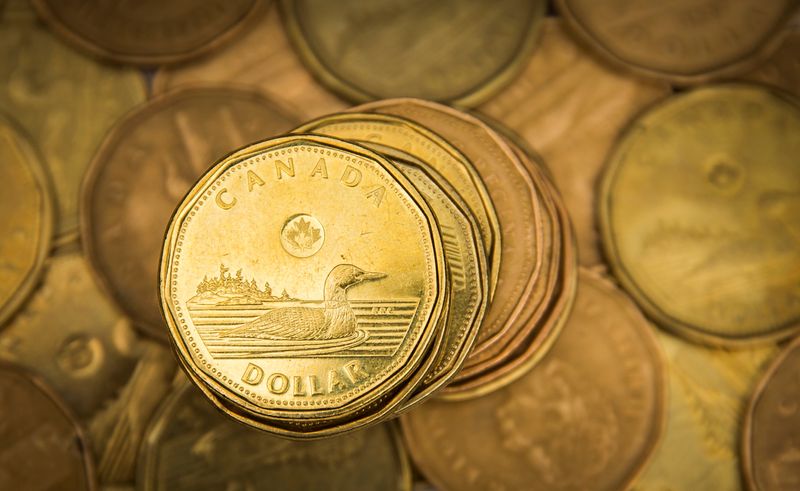TORONTO (Reuters) - The Canadian dollar fell to a two-year low against its U.S. counterpart on Wednesday as geopolitical tensions bolstered safe-haven assets, but the move was limited as oil prices rose and ahead of a Federal Reserve interest rate decision.
The U.S. dollar extended recent gains against a basket of major currencies and U.S. Treasury yields fell after Russian President Vladimir Putin called up 300,000 reservists to fight in Ukraine and hinted to the West he was prepared to use nuclear weapons to defend Russia.
The price of oil, one of Canada's major exports, jumped as the escalation of the war raised concerns of tighter oil and gas supply. U.S. crude prices were up 1.3% at $85.04 a barrel.
The Canadian dollar was trading 0.1% lower at 1.3380 to the greenback, or 74.74 U.S. cents, after touching its weakest since September 2020 at 1.3393.
The Federal Reserve is expected on Wednesday to lift interest rates by three-quarters of a percentage point for a third straight time and signal how much further and how fast borrowing costs may need to rise to tame a potentially corrosive outbreak of inflation.

The Bank of Canada has also been fighting inflation. On Tuesday, Deputy Governor Paul Beaudry said that inflation in Canada remains "too high" but is headed in the right direction, adding that the central bank will do whatever is needed to bring price increases back to target.
Canadian government bond yields were lower across the curve, tracking the move in U.S. Treasuries. The 10-year touched its lowest since Sept. 13 at 3.062% before recovering slightly to 3.072%, down 3.5 basis points on the day.